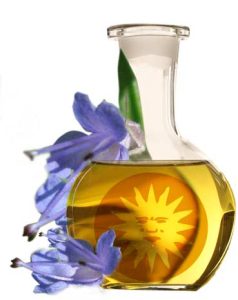Hyssop Essential Oil (Hyssopus Officinalis Decumbesn)
At Esencias Lorente, we take pride in presenting our Hyssop essential oil, a versatile and potent essence used in a wide range of industrial applications. Extracted from the leaves and flowers of the Hyssop plant, our essential oil is obtained through steam distillation in stainless steel stills, ensuring maximum purity and quality. With its fresh and herbaceous aroma, Hyssop essential oil is valued for its antiseptic, expectorant, and stimulating properties. Widely used in the pharmaceutical, cosmetic, and cleaning product industries, Hyssop essential oil adds value to a variety of products, from ointments to disinfectants. At Esencias Lorente, we are committed to providing you with the purest and most authentic Hyssop essential oil, backed by our experience and dedication to excellence in the distillation of aromatic plants. Trust us to enhance the quality and effectiveness of your products with our Hyssop essential oil.
Description: This plant makes a bush whose stump produces new seeds from 1.5 to 3 spans which are usually covered by little short hairs turned down.
Bloom: In summer.
Growth: In cultivations in Cuenca and Guadalajara.
Composition: It can reach a 2% in essence, it is aromatic but toxic. It is composed by L-Pinecamphone in a 45%.
Use: It is used in perfumery.
TECHNICAL TABLE OF ESSENCE OF Hyssop
ORGANOLEPTIC INFORMATION
PHYSICO-CHEMICAL INFORMATION
CHEMICAL COMPOSITION (Active Principles)
The essential oil of hyssop (Hyssopus officinalis) is valued for its therapeutic properties and diverse chemical composition. Some of the main chemical components found in hyssop essential oil are:
- Pinocamphone: A compound with antibacterial and antifungal properties.
- Iso-pinocamphone: Similar to pinocamphone, with antimicrobial properties.
- 1,8-cineole (Eucalyptol): Known for its beneficial effects on respiratory health and its decongestant ability.
- Terpinene-4-ol: Possesses antiviral and antimicrobial properties.
- Linalool: Present in smaller amounts, it may have relaxing and anti-inflammatory properties.
- Borneol: Has analgesic and anti-inflammatory properties.
- Thujone: Although in smaller quantities, it is a compound that may also be present and has antimicrobial properties.
These are some of the chemical components present in hyssop essential oil. The proportion and presence of these components may vary depending on various factors, such as the variety of hyssop, growing conditions, climate, and the method of essential oil extraction.
Description of Hyssop:
Hyssop, scientifically known as Hyssopus officinalis, is a perennial herbaceous plant belonging to the Lamiaceae family. It is native to Mediterranean regions and is characterized by its distinctive aroma and medicinal properties.
Hyssop is an herbaceous plant that reaches heights of approximately 60 centimeters. It has woody and slender stems with linear, narrow, opposite leaves, dark green in color, and a hairy appearance. The hyssop flowers, which bloom in summer, are small, tubular, ranging in color from light blue to purple, and are clustered in terminal spikes, providing ornamental appeal to the plant.
Uses and Benefits of Hyssop:
- Medicinal Properties: Hyssop contains essential oils, such as pinene and cineol, which give it expectorant, antispasmodic, and antimicrobial properties. It has been used in traditional medicine to relieve respiratory congestion, coughs, colds, and mild digestive issues.
- Culinary: In the kitchen, fresh or dried hyssop leaves have been used as an aromatic herb to add flavor to certain dishes, such as soups, salads, stews, and dressings.
- Aromatherapy: Hyssop essential oil is used in aromatherapy for its fresh and stimulating aroma, believed to help alleviate stress and mental fatigue.
- Gardening and Ornamentation: In addition to its medicinal and culinary uses, hyssop is often cultivated as an ornamental plant in gardens for its attractive flowers and green foliage.
It’s important to note that, although hyssop has various traditional uses, its consumption or therapeutic use should be approached with caution and under the guidance of a healthcare professional, as it could be toxic in certain doses. Additionally, it’s crucial to ensure that any product made with hyssop is safe and free of impurities before use.
